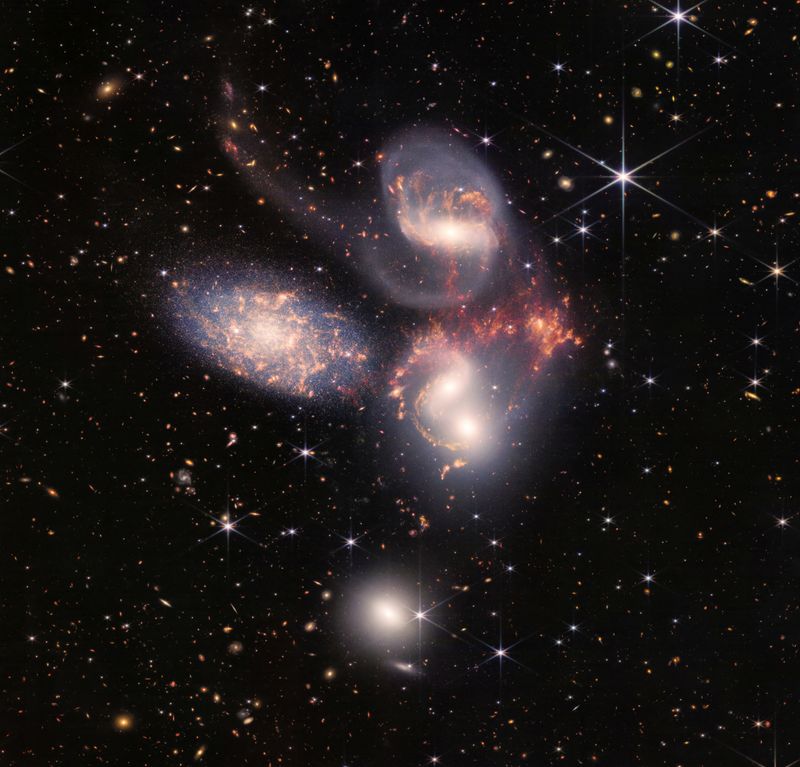NASA's Webb Telescope, 1 mn miles from Earth, gives deepest-ever look at universe
NASA's James Webb Space Telescope, from its celestial perch almost 1 million miles from Earth, is giving humanity its deepest look ever into the farthest reaches of the universe.

The James Webb Space Telescope, from its celestial perch almost 1 million miles from Earth, is giving humanity its deepest look ever into the farthest reaches of the universe. The US space agency NASA on Tuesday released images captured by the telescope, showing in new detail such wonders as a vast cloud of gas surrounding a dying star, and the steamy atmosphere of a giant gassy planet 1,150 light-years from Earth.
Scientists expect a torrent of knowledge from the telescope, which scans infrared frequencies that aren't visible to the human eye, but are rich in information about the building blocks of the universe.
“I'm very excited,” said Christopher Johns-Krull, a professor of physics and astronomy at Rice University in Houston who studies planets outside Earth's solar system. “The James Webb is going to reveal a lot, and truly move the field forward.”
The telescope “is going to be particularly powerful for looking at planets around other stars,” Johns-Krull said in an interview.
Possibilities include finding a planet that supports life, and knowledge about how galaxies are formed, Johns-Krull said.
During an event Monday President Joe Biden unveiled an initial image that showed thousands of galaxies.
“It's a new window into the history of our universe,” Biden said at the White House. “It's astounding to me.”
The James Webb -- named for an early NASA administrator -- launched Dec. 25, after more than two decades of development, at a cost of almost $11 billion.
It is the largest, most powerful and most complex space telescope ever built, according to NASA. Webb is an international program led by NASA with the European Space Agency and the Canadian Space Agency.
The telescope is farther from the sun than the Earth, its instruments protected from solar glare by a shield the size of a tennis court that unfolded after launch. That isolation helps the telescope avoid radiation that could compromise its data gathering.


“You can see the faintest things, which means they're the farthest things. Which means you're looking further back” in time, said Johns-Krull, the Rice astronomer.
On Monday, NASA said it had thoroughly checked out the telescope's scientific instruments.
“Webb has completed its commissioning activities and is ready to begin full scientific operations,” the agency said in a news release.
NASA expects Webb to pick up images from galaxies that existed as early as the first few hundred million years after the big bang, which occurred some 13.8 billion years ago.
With Webb's observations, researchers will be able to tell us about the makeup and composition of individual galaxies in the early universe for the first time, NASA said in a June 22 news release.
“It may answer some questions that we have,” NASA Administrator Bill Nelson said at a June 29 news conference. “Where do we come from? What more is out there? Who are we?”
Oleg Kargaltsev, an associate professor of physics at George Washington University in Washington, DC, is part of a team that plans to use the telescope to investigate emissions from a neutron star, probing the formation and evolution of the super-dense objects.
“I am thrilled to see what is in those images and am very eager to get my hand on the actual data,” Kargaltsev said in an email.
Catch all the Latest Tech News, Mobile News, Laptop News, Gaming news, Wearables News , How To News, also keep up with us on Whatsapp channel,Twitter, Facebook, Google News, and Instagram. For our latest videos, subscribe to our YouTube channel.





























